
Emily Conover
Physics, Senior Writer, Science News
Physics writer Emily Conover loves physics for its ability to reveal the secret rules about how stuff works, from tiny atoms to the vast cosmos. Before becoming a science journalist, she studied physics at the University of Chicago. There, she investigated the weird ways of tiny particles called neutrinos. She has previously written for the Milwaukee Journal Sentinel, Science Magazine and the American Physical Society. She is a two-time winner of the D.C. Science Writers’ Association Newsbrief award.

All Stories by Emily Conover
-
 Materials Science
Materials ScienceLaser light transformed plastic into tiny diamonds
The technique could be used to make nanodiamonds for quantum devices and other technology.
-
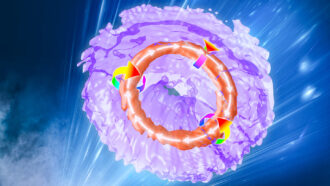 Physics
PhysicsScientists used lasers to make ‘smoke rings’ of light
Physicists had a bright idea: Make light into swirling, ring-shaped vortices, similar to smoke rings or bubble rings.
-
 Physics
PhysicsWhen dominoes fall, how fast the row topples depends on friction
Two types of friction help determine how quickly a line of dominoes collapses, computer modeling shows.
-
 Computing
ComputingA new supercomputer just set a world record for speed
Able to perform more than a quintillion calculations per second, it will allow scientists to study exploding stars, subatomic particles and more.
-
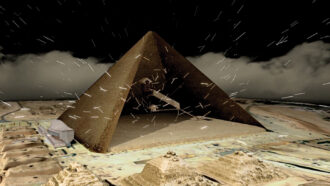 Physics
PhysicsMuons reveal the inner worlds of pyramids, volcanoes and more
Tracking these subatomic particles can uncover surprising hidden structures.
-
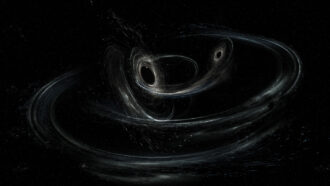 Space
SpaceGravitational waves ‘kicked’ a newborn black hole across space
Two black holes merged into one, and then sped off at around 5 million kilometers (3.1 million miles) per hour.
-
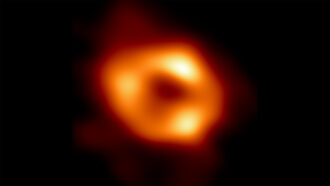 Space
SpaceWe finally have an image of the black hole at the heart of our galaxy
New observations from the Event Horizon Telescope reveal the chaotic region around the Milky Way’s central black hole, Sagittarius A*, in extreme detail.
-
 Humans
HumansSnap! High-speed video captures the physics of snapping fingers
Inspired by the infamous snap of the Avengers rival Thanos, scientists set out to investigate the physics behind finger-snapping.
-
 Physics
PhysicsHere’s why ducklings swim in a row behind mom
Baby ducks save energy by surfing their mother’s waves, but only if they do it in an orderly line.
-
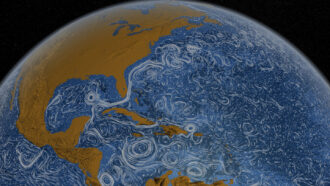 Physics
PhysicsResearch on climate and more brings trio the 2021 physics Nobel Prize
Syukuro Manabe and Klaus Hasselmann pioneered work on simulations of Earth’s climate. Giorgio Parisi probed complex materials.
-
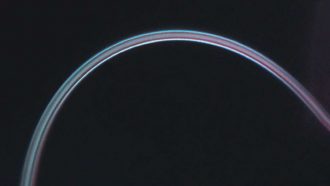 Physics
PhysicsTake a look at this weird, bendy type of ice
These specially grown threads of ice bend into curves, then spring back when released.
-
 Space
SpaceMoon-sized white dwarf is the smallest ever found
This dead star is also spinning very fast and has an amazingly powerful magnetic field.